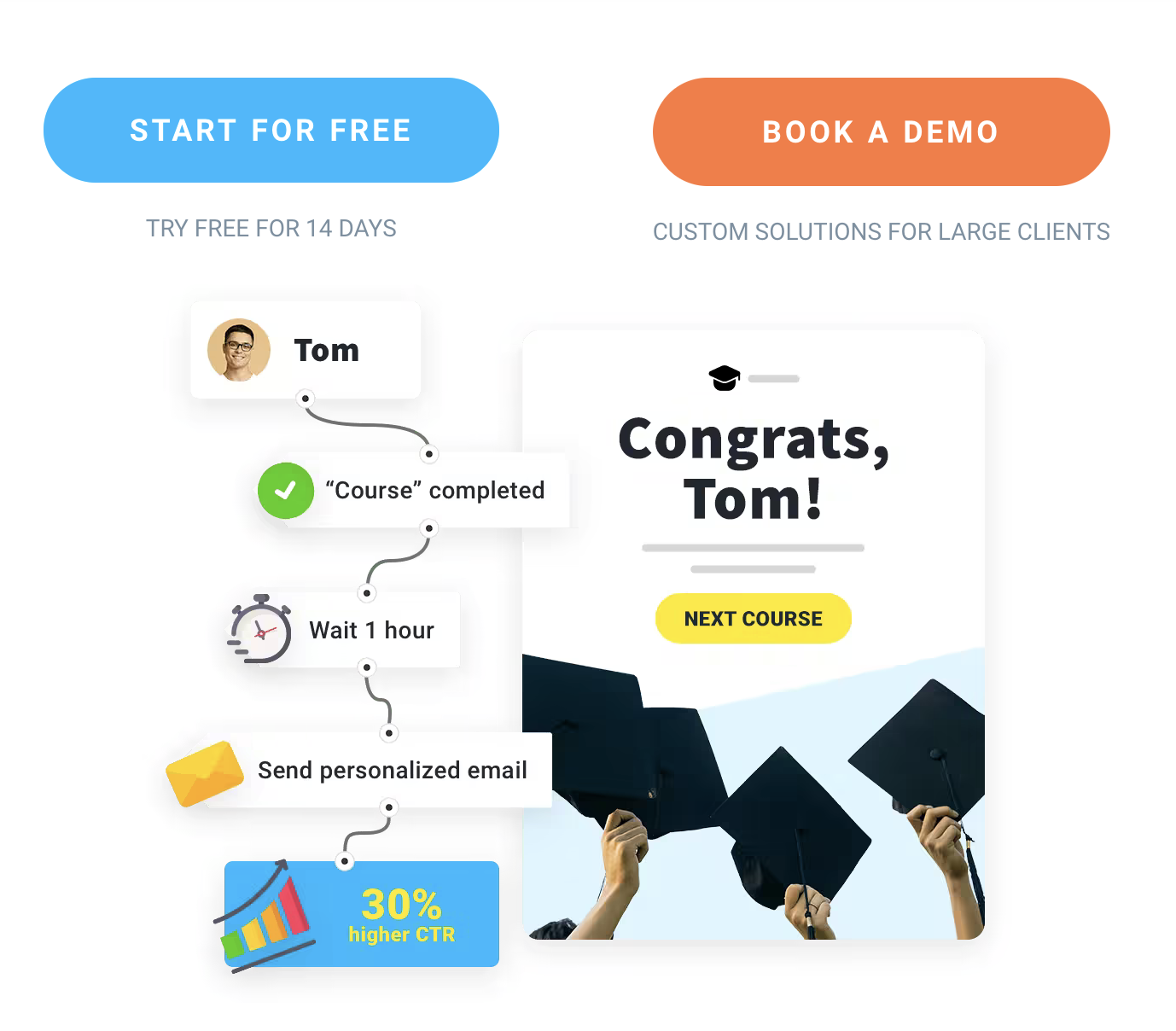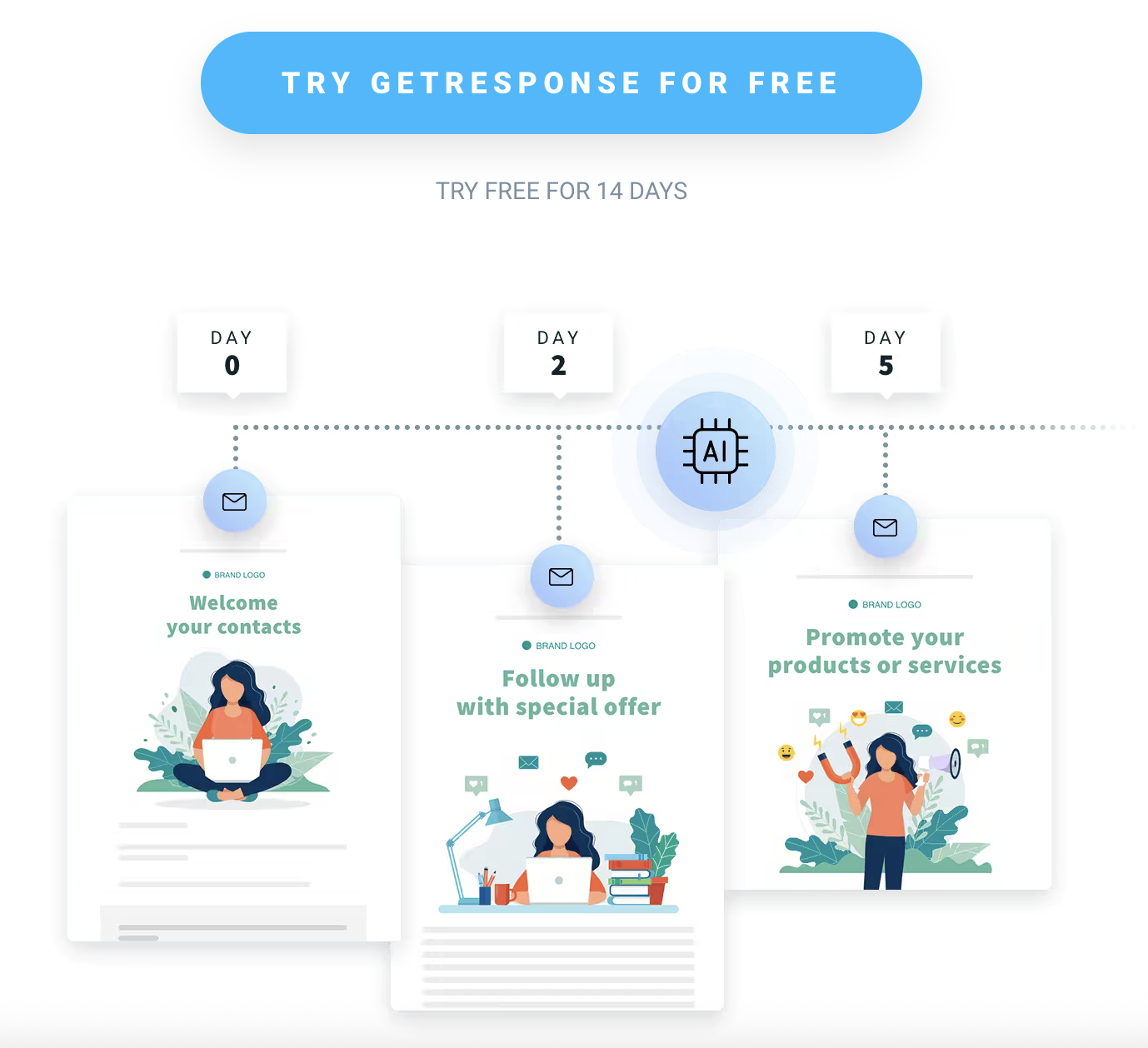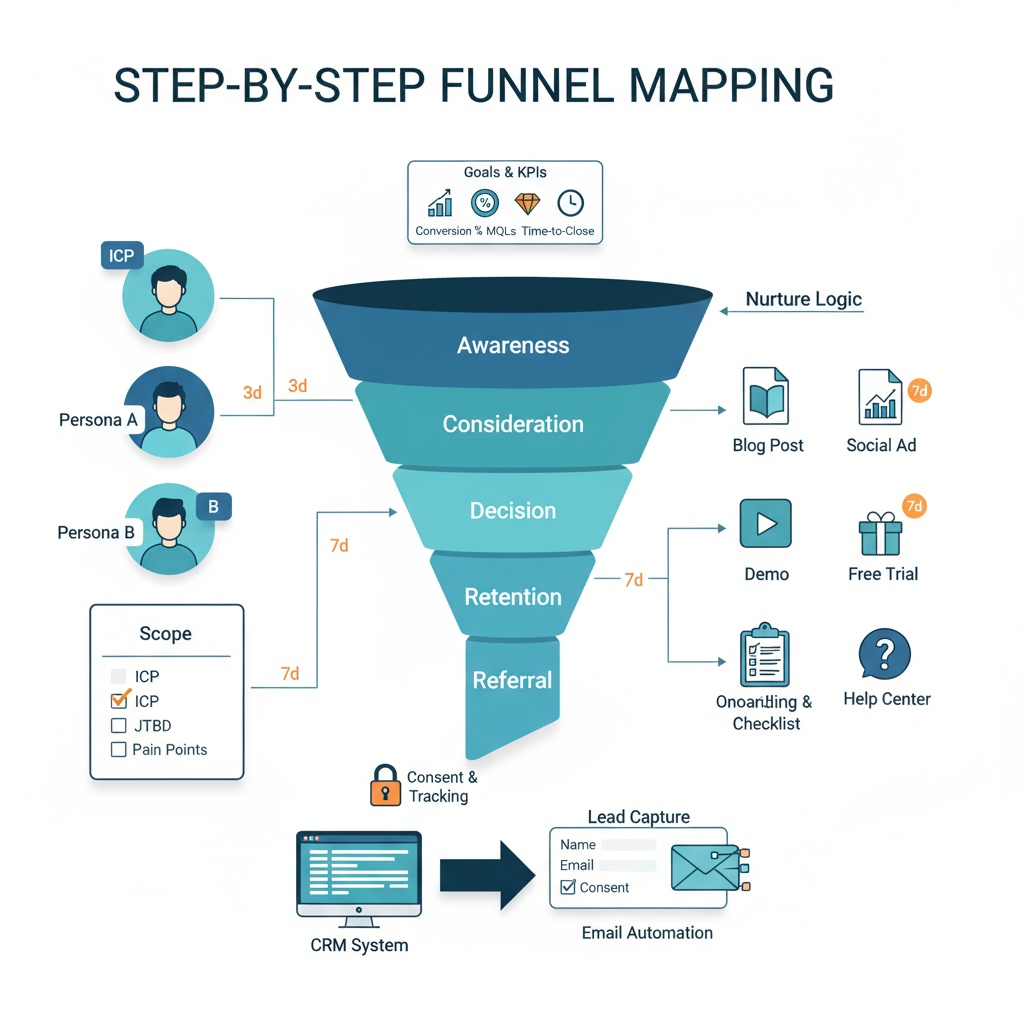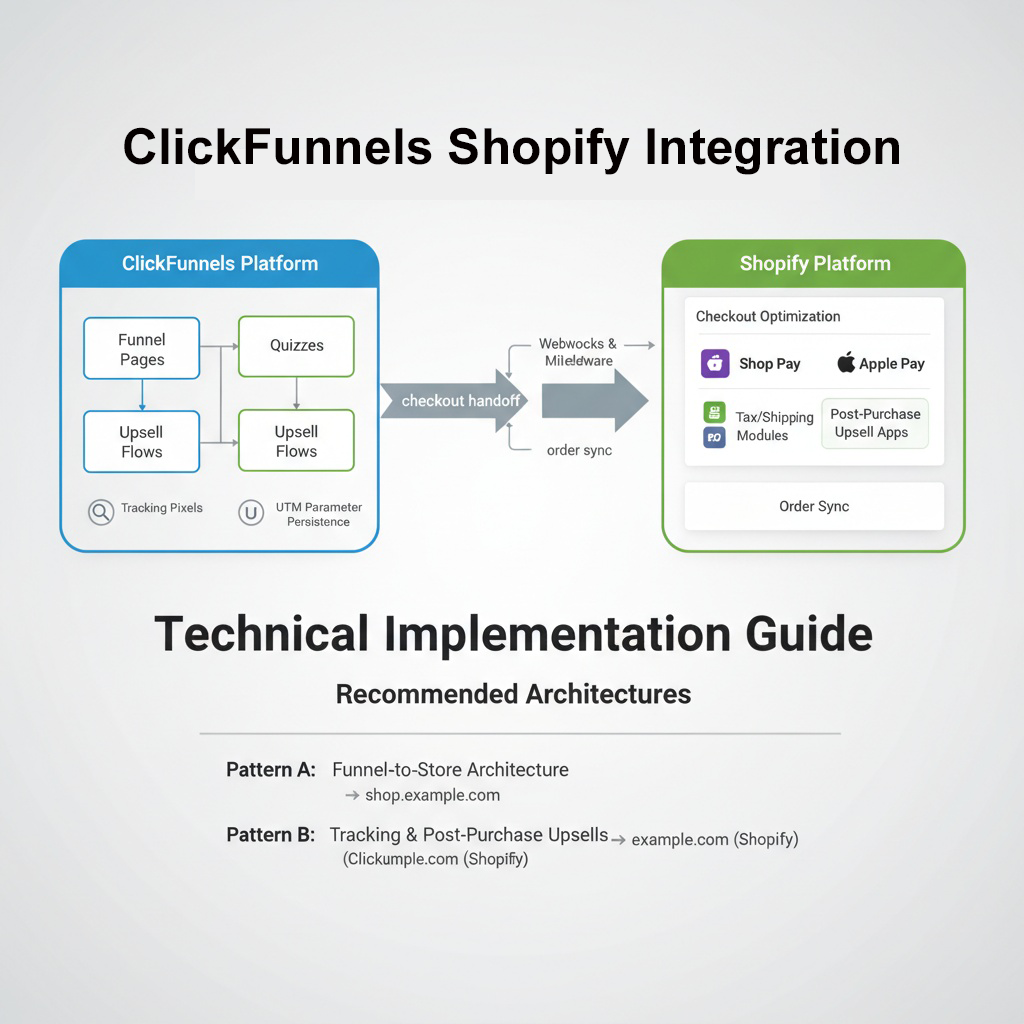Email Response Generator: A practical guide to faster, on-brand support and sales emails
AI-powered email response generators are reshaping how teams handle customer conversations and outbound sales. By combining large language models with proven templates, CRM data, and knowledge base retrieval, they can draft personalized replies in seconds—often covering up to 90% of routine emails with human-quality tone and accuracy.
For customer experience and sales leaders, the value goes beyond speed. These systems standardize voice, scale personalization, sharpen subject lines, and free your experts to focus on high-impact work—complex troubleshooting, strategic outreach, and deal progression.
This guide shows you how to select, configure, and operationalize an AI response generator across support and sales workflows—without sacrificing brand safety or compliance.
What you’ll learn:
- How modern response generators work (LLMs + templates + CRM/KB retrieval)
- Essential features for enterprise-grade deployment
- Tone controls, personalization rules, and guardrails
- QA and human-in-the-loop workflows that protect accuracy
- Metrics that prove impact across CSAT, reply rates, and revenue
Email for customer support
Cut first-response times while keeping empathy and policy compliance intact. Automate FAQs, refunds, shipping updates, and troubleshooting with grounded, cited answers that match your voice.
Subject line generator
Improve open rates with concise, specific, and spam-safe lines. Pair with A/B testing to iterate on sentiment, variables, and framing for both support and sales outreach.
Welcome email template
Standardize onboarding with copy-ready structures that accelerate time-to-value, set expectations, and link to the right resources—no more ad‑hoc drafting.
From feature checklists to prompt libraries and review workflows, the next sections walk through the decisions that turn an automated reply writer into a reliable, brand-right communication engine.
How an email response generator actually works
An email response generator combines large language models, reusable templates, and retrieval from your knowledge bases to turn inputs into tailored, human-sounding replies. Under the hood, a model predicts the next best words based on context and intent, then grounds its draft with facts from your docs and CRM so it does not invent details. The result is a response that reads like a human wrote it, but lands in seconds. For a concise overview of the approach in support and sales, see this guide to best practices for sales teams and this analysis of AI for support from Capacity.
The highest-performing setups blend three ingredients:
- Language model as the writer. It controls tone, structure, and fluency when properly prompted.
- Template framework as the scaffold. It selects a pattern for the situation, like refund, shipping delay, or pricing objection, then fills the blanks.
- Retrieval layer as the fact source. It pulls policy, product, and account context from your knowledge base and CRM to reduce hallucinations.
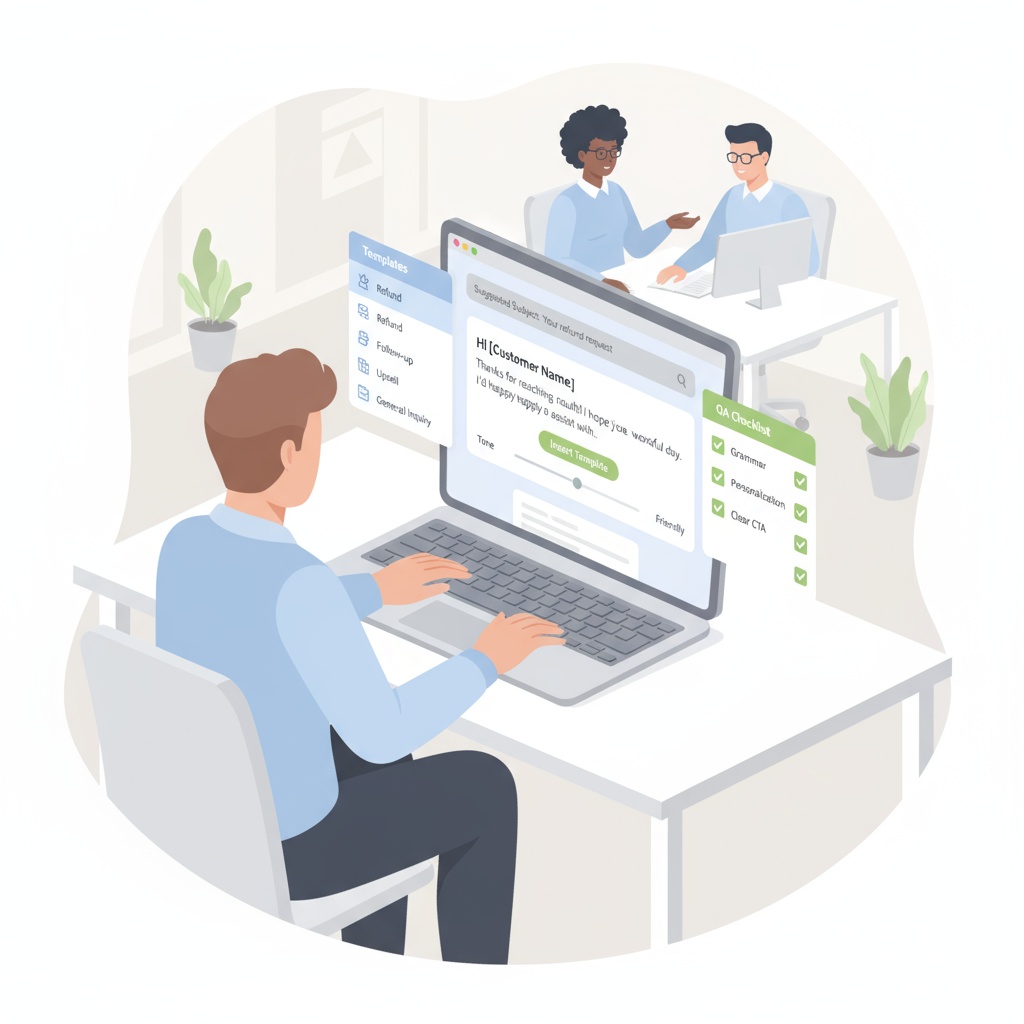
That stack enables teams to automate up to 90 percent of routine replies while preserving quality and personalization, as outlined in the Capacity discussion of support outcomes. In sales, the same mechanics accelerate first-touch and follow-up outreach so reps can focus on discovery and closing.
Core features to demand in a response generator
The right response generator makes speed and quality the default. Prioritize capabilities that improve open, reply, and resolution rates without increasing risk.
- Subject line generator with A/B testing. Generate concise, specific lines that avoid spam triggers, then test variants to improve opens. Sales teams can pair this with sequence tools like Reply.io for systematic experiments.
- Suggested replies with confidence scoring. Multiple draft options ranked by relevance help agents choose quickly and spot low-confidence cases that need editing.
- Tone and length controls. Sliders for formality, empathy, and detail ensure a refund denial lands gently while a welcome email feels warm and crisp.
- Dynamic variables. Auto-populate names, order IDs, plan tiers, or industry details from your CRM for credible personalization at scale.
- Auto-citations. Link policy claims to exact knowledge base articles so agents and customers can verify facts. This practice curbs hallucinations highlighted in support-focused writeups from Capacity.
- Approval queues. Route high-risk or complex topics to human review while auto-sending truly routine confirmations.
If you need a quick way to experiment, a free responder like Planable’s AI email response generator or a lightweight composer such as Jotform’s email response tool can demonstrate the workflow before deeper rollout. For sales, platforms like Reply.io and Happysales.ai offer outreach-focused generators aligned to prospecting.
Subject line generator tactics that lift opens
Start with formulaic patterns that communicate value clearly, then iterate:
- Support: Order {orderid} refund approved, Your shipment update for {orderid}, Quick fix for {issue_type}
- Sales: Quick question about {painpoint} at {company}, {Mutualconnection} suggested I reach out, {Company} + {your_company}: {outcome}?
A/B testing matters. The Glyph AI guidance for sales teams emphasizes testing micro-variants, like question vs statement, to uncover small but compounding gains.
Selecting the right email response generator for support and sales
Selection should reflect your channels, data, and workflow. Look for tools that plug into your help desk and CRM so the generator sees tickets, contact fields, and knowledge articles in context. Verify it supports role-based prompts so support, SDRs, and success managers each inherit the right behaviors. If you are comparing options, reference lists like the Gmelius overview of top AI responders and the Relevance AI library of email response agents to understand capability breadth.
Extended comparative view:
| Evaluation area | Support-first platforms | Sales-first platforms |
|---|---|---|
| Native integrations | Deep help desk, ticket context, KB retrieval | CRM, sales engagement, sequence triggers |
| Subject line focus | Clear status, ticket routing, policy references | Personalization hooks, value props, A/B tests |
| Tone controls | Empathy, apology strength, brevity for resolutions | Confidence, curiosity, CTA strength |
| QA workflow | Approval queues, citations, policy checks | Sequence-level QA, objection handling prompts |
| Personalization data | Order IDs, plan tier, product usage | Industry, role, recent news, mutual connections |
| Reporting | CSAT linkage, first response time, deflection | Open/reply rates, meetings booked, pipeline contribution |
If you are already evaluating generic writers, Toolsaday’s email generator and Happysales.ai can serve as benchmarks for usability and draft quality.
Step-by-step setup to operationalize your generator
Treat setup as a series of small wins that build toward reliable automation.
- Connect data foundations. Import your best macros, resolved tickets, and KB articles. Sync CRM fields such as name, company, tier, and deal stage so variables render correctly. Sales teams can optionally enrich with website or LinkedIn notes, a best practice covered in the Glyph AI guide.
- Define brand voice guardrails. Specify formality, empathy, and clarity expectations with banned phrases and taboo claims. Include concrete do and don’t lists so tone remains consistent across thousands of sends.
- Build prompt libraries per team and intent. Support prompts should acknowledge emotion, cite policies, and propose next steps in under 150 words. Sales prompts should highlight value, ask one thoughtful question, and present a soft call to action.
- Enable platform features. Configure subject line defaults, signatures, and dynamic placeholders for CRM fields like {firstname}, {company}, {ordernumber}, and {ticket_id}.
- Design your human-in-the-loop rules. Auto-send routine confirmations, require review for refunds, complex technical issues, or policy exceptions, and escalate when confidence is low.
Shadow mode is the safest on-ramp. Let the generator draft responses without sending while agents rate usefulness on a 1 to 5 scale for two to three weeks. This surfaces prompt gaps and KB holes before you turn on automation.
Copy-ready prompt templates you can deploy today
The fastest way to realize value is to standardize common scenarios, then let the generator fill context and tone.
Support templates inside your email for customer support workflow
Refund request with policy explanation
- Goal: Approve when in-policy; deny with empathy when out-of-policy; include next steps, timing, and a helpful alternative.
- Variables: {customername}, {orderid}, {purchasedate}, {refundpolicy_url}
- Tone and length: Empathetic, solution oriented, 100 to 125 words.
Delayed shipment with proactive compensation
- Goal: Acknowledge, explain briefly, share new ETA, offer goodwill, and link tracking.
- Variables: {customername}, {orderid}, {originaleta}, {neweta}, {delayreason}, {compensationoffer}
- Tone and length: Apologetic, action oriented, 90 to 110 words.
Technical troubleshooting with citations
- Goal: Stepwise instructions from simple to advanced, with tests after each step and escalation if unresolved.
- Variables: {customername}, {productname}, {issuedescription}, {relevantkb_articles}
- Tone and length: Patient, instructional, 150 to 180 words.
Sales templates powered by your response generator
Cold outreach to a qualified lead
- Goal: Open with personalization, state a one-sentence value prop tailored to the industry, and ask one smart question.
- Variables: {prospectname}, {company}, {industry}, {painpoint}, {personalization_hook}
- Tone and length: Confident, curious, 80 to 100 words.
Objection handling on pricing
- Goal: Reframe cost as ROI with a concrete metric or case study, propose a short call, and offer time slots.
- Variables: {prospectname}, {company}, {industry}, {objectiondetails}, {relevantcasestudy}, {calendar_link}
- Tone and length: Understanding, value focused, 90 to 110 words.
Re-engagement for dormant leads
- Goal: Reference elapsed time, share a relevant update, and ask if the solution is still a priority.
- Variables: {prospectname}, {dayssincelastcontact}, {newdevelopment}, {solutioncategory}
- Tone and length: Respectful, low pressure, 70 to 90 words.
For a quick benchmark of what different tools produce, explore a sales-oriented builder like Reply.io’s outreach platform and a general-purpose generator such as Planable’s free responder.
Welcome email template options that set the tone
Customer success onboarding
- Subject: Welcome to {productname}, {customername}!
- Structure: Friendly intro, clear next steps with links, community invite, and a scheduling link for onboarding.
- Outcome: Early activation and reduced time to value.
Sales-to-customer handoff
- Subject: Getting started with {company} — your implementation guide
- Structure: Week-by-week plan, resource links, support channels, and a clear confirmation step.
- Outcome: Smooth transition and fewer early-stage support tickets.
Mastering tone control and personalization at scale
Tone is not a guess. Operationalize it with controls and rules that every draft inherits.
- Use sliders for empathy, formality, and detail so agents can fine-tune without rewriting.
- Encode style rules in prompts: active voice, inclusive language, clear CTAs, and a target reading level.
- Establish taboo lists for phrases that undermine trust or create legal risk.
- Personalize beyond name and company when data exists: prior tickets, product usage, industry context, or local holidays.
- Implement safe defaults. If {first_name} is missing, fallback to a neutral greeting rather than inserting an empty variable.
Teams that document side-by-side examples of good vs poor tone see faster ramp time and tighter consistency across support and sales.
Quality assurance and human oversight inside your workflow
A structured QA layer protects accuracy, tone, and compliance without slowing down the queue.
- Review rules. Always review low-confidence drafts, refunds over a set threshold, and any reply containing policy exceptions or legal terms.
- Scoring rubric. Evaluate accuracy, tone, compliance, brevity, personalization, and actionability on a 1 to 5 scale. Require passing scores before approval.
- Safeguards. Enforce PII checks, require citations for factual claims, and block invented dates or refund amounts. These guardrails reflect practices highlighted in support-focused resources from Capacity.
- Golden set testing. Maintain a set of representative inquiries with ideal answers, and run monthly tests to catch drift.
Feedback loops matter. Weekly summaries of common edits and rejections help prompt owners refine instructions and KB authors fill documentation gaps. For a library of agent-focused templates and tasks, review the Relevance AI collection for email response generation.
Measuring success without guesswork
Tie generator performance to business outcomes that leaders already track.
- Support. First response time, average handle time, CSAT, first contact resolution, and deflection from email to phone or chat.
- Sales. Open rate, reply rate, positive response rate, meetings booked, and pipeline created.
- Quality indicators. Approval rate, edit distance between draft and send, policy violation flags, and model confidence distribution.
Run weekly A/B tests on subject lines and openings, with a minimum sample per variant to reach significance. Anchor your testing cadence to high-volume email types so improvements compound.
Real-world examples that show the delta
Support refund denial with empathy
- Before: Policy-heavy text that reads cold and final.
- After: A brief, empathetic explanation linked to the exact policy, plus a viable alternative such as store credit. Capacity’s field data shows this style reduces escalations and deflects phone calls.
Shipping delay with proactive compensation
- Before: Vague apology and new date.
- After: Specific cause, new ETA, tracking link, and a goodwill code like THANKYOU15. Result: higher satisfaction and fewer back-and-forth emails.
Sales cold outreach with personalization
- Before: Generic pitch with no hook.
- After: Timely reference to company news, a one-sentence value prop, and one sharp question. Glyph AI’s recommendations reinforce this short, personalized format for reply lift.
Pricing objection handling
- Before: Defensive generalities.
- After: Concrete ROI with a relevant case study and two time options for a quick model review.
If you want to explore tools that support these patterns, see roundups such as the Gmelius list of top AI email response generators and the Happysales.ai example of a sales email generator.
Troubleshooting common issues in your generator
- Drafts are too long. Set explicit word limits, remove redundant restatements in prompts, and lower creativity to produce tighter answers.
- Factual errors. Require citations to KB documents and expose source snippets next to drafts so agents can verify instantly.
- Off-brand tone. Provide a detailed style guide with banned phrases, preferred alternatives, and weekly calibration reviews.
- Generic subject lines. Expand formula libraries by intent and enable A/B testing on high-volume categories.
- Personalization glitches. Audit CRM mappings, add fallback logic for null fields, and spot check variable rendering weekly.
A simple place to practice these tweaks is a free responder like Planable or a focused outreach tool such as Reply.io before you scale across teams.
Where this sets you up next
You now have the mechanics for configuring an email response generator, ready-to-use templates for support and sales, tone controls that scale, and a QA framework tied to quality metrics. In the next section, we will connect these building blocks to the broader operational picture, including how the generator fits into existing help desks and CRMs, what to consider for data protection and regional regulations, and how analytics, customization depth, and a phased pilot approach shape sustained success across your organization.
Operating Model Upgrade: Embedding the Email Response Generator Into Day‑to‑Day Work
Treat automation as a capability, not a widget. Assign clear ownership for prompts, knowledge sources, and risk controls across support, sales, and legal. A lightweight RACI helps: product or CX owns the intent library, operations oversees review thresholds, compliance sets guardrails, and frontline managers coach edits. Define decision rights for when the AI can auto-send, when agents approve, and when supervisors step in. Publish playbooks per scenario that specify response time expectations, escalation paths, and how quality scores tie back to coaching.
Deliverability Discipline for Scaled Sales Outreach
A powerful response generator can produce more emails than your domain reputation can safely tolerate. Protect sender health with a send policy that includes:
- Domain and subdomain segmentation for prospecting vs account communications
- Daily caps per mailbox and gradual warm-up schedules
- Automatic throttling when bounce or complaint rates spike
- Strict compliance checks for footer content and unsubscribe links
Pair your subject line generator with reputation safeguards. Maintain a vetted library of subject line families by intent, rotate variants, and blacklist phrases that correlate with spam traps. Platforms built for high-volume outreach such as Reply.io’s cold email platform can handle sequencing and throttling while your generator provides personalized copy at scale.
Advanced Experimentation: Beyond Simple A/B
Most teams stop at split tests. Go further:
- Use multi-armed bandits to dynamically shift traffic to stronger subject lines while still exploring new variants
- Run hierarchical tests that isolate one variable at a time: opening hook, proof point, call to action
- Keep permanent holdout cohorts to estimate true incremental impact
- Track second-order outcomes, not just open or reply rates, including meeting acceptance and revenue created
Feed experiment metadata back into your response generator so it learns which structures perform for each persona and stage. For sales teams, Glyph’s guidance on best practices for sales teams highlights how contextual inputs improve performance as volume grows.
Data Architecture That Enables Grounded Personalization
Personalization fails without disciplined data. Create a minimal, vetted profile for each contact that includes consent status, last interaction outcome, and two or three role-relevant attributes. Maintain a consent taxonomy that your response generator respects by default. Route sensitive fields through redaction and tokenize identifiers before they reach the model. Support teams that adopt an AI email generator for support often anchor responses in a curated knowledge base and recent ticket history so the model stays factual under pressure.

Sector-Specific Controls That Withstand Audits
- Healthcare: treat any patient-identifiable content as out of scope for auto-send. Log all model inputs and outputs for audit. Enforce strict template usage for clinical guidance and default to escalation.
- Financial services: preserve an immutable archive for e-discovery, including prompts and retrieved sources. Enforce mandated disclosures and cooling-off language. Route pricing or advice-related drafts to licensed reviewers.
- Education and public sector: apply heightened accessibility standards and reading-level checks. Localize to community norms and observe data residency boundaries for student or citizen information.
Capacity’s perspective on support operations underscores why rigorous controls are non-negotiable in regulated environments.
Multilingual, Not Just Translated
Localization is more than swapping words. Build language-specific voice profiles, maintain approved glossaries, and use locale-aware date, currency, and honorifics. Measure quality with human review on high-value languages and automated metrics on long-tail locales. Create fallbacks so the generator routes Arabic and Hebrew to RTL-aware templates, and send Japanese customers to shorter, more formal messages by default. Escalate whenever the system cannot meet tone and legal expectations in-language.
Workforce Realignment and New Roles
Automation changes who does what:
- Prompt librarian curates intents, examples, and taboo phrases per function
- Knowledge editor maintains the factual corpus and expiry dates for articles
- QA lead tunes thresholds, runs calibration sessions, and analyzes edit distance
- Deliverability analyst monitors sender reputation, bounce patterns, and list hygiene
- Training lead runs short sprints where agents practice edits on AI drafts, focusing on tone and clarity
Tie incentives to quality metrics rather than raw volume. Reward edits that reduce length while increasing clarity, and highlight exemplary welcome email template sends that drive onboarding engagement.
Risk Register and Red Teaming
Map realistic failure modes and test them routinely:
- Prompt injection via quoted customer text that attempts to override system rules
- Hallucinated policies when retrieval confidence drops
- PII echo from long-running ticket threads
- Over-personalization that violates consent
Run monthly red-team drills with seeded tickets, track containment rates, and publish fixes. Relevance AI’s email response generation AI agents illustrate how task-specific agents and guardrails can narrow failure surfaces. Maintain kill switches per queue and a rapid rollback path for prompts and templates.
Cost and Latency Controls Without Sacrificing Quality
Adopt a performance budget for every message type:
- Cache response stubs for common FAQs and apply light personalization at send time
- Use retrieval to shrink prompts rather than adding more few-shot examples
- Set deterministic decoding for compliance-heavy scenarios and higher creativity for prospecting
- Batch-generate variants during low-traffic windows for later selection
- Track cost per resolved contact and cost per positive reply on a rolling basis
Benchmark vendors across throughput, latency, and accuracy on your golden set. Maintain a backup model or a rules-based macro for continuity during outages. A marketplace scan such as the best AI email response generators in 2025 helps frame tradeoffs across tools.
Channel Orchestration and Adaptive Sequencing
Email for customer support is only one touchpoint. Route simple confirmations to email, urgent account lockouts to SMS, and high-risk complaints to live chat with a human kickoff. Use predicted resolution probability to choose the channel and the level of AI autonomy. In sales, hand off a stalled email thread to a phone call with a concise AI-generated call plan. A sales email generator like Happysales.ai can produce channel-specific variations that stay on-message while respecting constraints.
Mini Snapshots by Industry
- Airline operations: during weather disruptions, the generator assembles rebooking options from live inventory, adds airport-specific advisories, and offers a voucher when thresholds are met. Human agents approve high-status passengers, while standard itineraries auto-send within minutes.
- B2B manufacturing: quoting teams receive AI-prepared replies that reference part numbers and lead times pulled from ERP. The model highlights any RoHS compliance dependencies and proposes an alternate material if supply risk is rising.
- Fintech disputes: for chargeback pre-arbitration, the system drafts an evidence packet summary, flags missing proof, and inserts neutral tone language that avoids admissions of liability. Legal reviews any draft that mentions regulatory bodies.
Procurement, Governance, and Contracts That Age Well
Bake non-functional requirements into the contract: response generation latency, uptime SLAs, audit logging scope, data deletion timelines, model update notifications, and incident reporting windows. Include a quarterly joint business review where the vendor presents drift analysis, roadmap changes, and benchmarking. Keep a living playbook that documents every change to prompts and knowledge, with version tags and reinstatement procedures.
Tools Landscape and Where They Fit
- Support teams exploring pilots can trial a free tool to stress-test prompts on low-risk queues
- Sales orgs needing speed-to-volume can lean on AI Sales Outreach platforms while layering a custom response generator for deeper personalization
- Teams evaluating build vs buy can review utility tools like AI email generator directories and task-specific agents to understand the modular stack
- For embedded use inside forms and inboxes, utilities that let reps reply to emails instantly can bridge gaps without full platform swaps
Useful reference points include AI email generator for support, best practices for sales teams, a sales email generator marketplace, a curated list of best AI email response generators in 2025, and utilities that enable reply to emails instantly.
Executive Scorecard That Drives Behavior
Report only what leaders can act on:
- Support: cost per resolved contact, first-contact resolution, deflection to self-serve, QA pass rate, and policy violation flags
- Sales: open and reply rates normalized by persona, positive reply ratio, meetings booked per 100 sends, pipeline created, and edit distance by rep
- Quality: approval rate without edits for low-risk intents, time-to-first-draft, and localization accuracy by language
Set targets per quarter and pair each metric with an owner and an improvement experiment. Publish a single-page operating summary each month that lists top prompt changes, new failure modes discovered, and the next two bets for performance gains.
Practical Tips You Can Apply This Week
- Prune knowledge articles older than 12 months unless explicitly marked evergreen
- Cap outreach sends per domain and rotate a fresh pool of safe, specific subject lines
- Introduce a two-sentence rule for first replies on support tickets under 150 words
- Add a consent-aware personalization check that removes risky fields automatically
- Run a red-team exercise focused on prompt injection using real customer quotes
- Pilot a multilingual queue with one language pair and a human backstop
For quick trials or comparisons, explore tools like Planable’s free tool, AI email generator catalogs from Toolsaday, and agent templates curated by Relevance AI that showcase specialized email agents.
Conclusion
The evidence shows modern teams win when they move from manual inbox triage to disciplined automation. An email response generator now anchors faster first replies, consistent voice, and personalization at scale—freeing experts to handle complex conversations and drive revenue.
Under the hood, large language models paired with structured templates and retrieval produce grounded, on-brand drafts. Confidence-scored suggestions, tone and length controls, dynamic variables, and a subject line generator turn every send into a precise, measurable touchpoint.
Quality never gets outsourced. Human-in-the-loop review, clear QA rubrics, policy-aware safeguards, and escalation paths lock in accuracy, compliance, and brand safety. This is controlled automation, not guesswork.
Tool selection decides your trajectory. Tight integrations with help desks and CRMs, robust security, customizable voice settings, experimentation frameworks, and outcome-level analytics form the non-negotiable stack for scale and reliability.
The path forward is direct. Launch a tightly scoped pilot—start with email for customer support or a focused sales sequence—using the prompt templates, response generator workflows, and welcome email template provided. Track first-response time, CSAT, open and reply rates, and approval rates, then refine prompts and knowledge sources while A/B testing subject lines.
Ultimately, the playbook is settled: automate the routine, uphold human judgment where it matters, and expand with evidence. Download the resources, choose your test segment, and activate the pilot within two weeks. Do this now, and you redirect hours from reactive work to value-creating engagement that elevates customer experience and accelerates growth.
Frequently Asked Questions
An email response generator uses large language models plus your templates and CRM data to create context-aware replies that read like a human wrote them. Unlike static canned responses, it pulls in dynamic variables (name, order ID, plan tier), retrieves relevant policy or product details from your knowledge base, and adapts tone and length to the situation. The result is scalable personalization for both email for customer support and sales outreach, with drafts that adjust to intent—refunds, troubleshooting, or cold emails—rather than one-size-fits-all macros.
Start by connecting your help desk (e.g., Zendesk, Intercom) and CRM (e.g., Salesforce, HubSpot) so the system can populate variables and retrieve context. Import your knowledge base and successful past tickets to ground replies. Define brand voice settings, map placeholders (first name, order number, account tier), and enable shadow mode so agents can rate drafts before anything auto-sends. Finally, configure approval queues and confidence thresholds so routine confirmations can be automated while riskier messages are routed for review.
Limit data to what materially improves relevance: name, company, order/ticket IDs, product tier, recent interactions, and applicable policy references. Enable PII redaction and access controls, and respect regional rules such as GDPR/CCPA. Practice data minimization—don’t pull entire contact records if you only need two fields—and set retention windows for logs and drafts. Always configure graceful fallbacks (e.g., “Hello there”) when fields are missing to avoid awkward personalization errors.
Use auto-send for low-risk, high-volume scenarios (order confirmations, password resets, shipping updates). Require agent approval for medium-risk cases (refunds within policy, simple troubleshooting) and supervisor review for high-risk communications (policy exceptions, legal mentions, VIP accounts). Leverage confidence scores and rules—e.g., below 80% confidence or containing taboo phrases—to route drafts to the right queue. This balances speed with quality and brand safety.
Strong prompts specify the role, desired tone and length, the variables to include, and the required structure (acknowledge, resolve, next steps). Use intent-specific templates—refunds, delayed shipment, objection handling—so the response generator can focus on relevant content while auto-populating details from CRM. Add requirements like “cite the policy” or “ask one follow-up question” to improve actionability. Keep temperature moderate for consistency and include explicit do/don’t lists for on-brand phrasing.
Configure tone sliders (formality, empathy, detail) and enforce a brand voice guide with banned phrases, preferred wording, and reading-level targets. Create role-based profiles so support sounds empathetic and clear while sales is confident and concise. Encode rules into prompts (avoid hedge words, limit exclamation points) and test samples weekly. Consistency comes from combining structured guardrails with templates—not from free-form creativity.
For support, track first response time and average handle time (expect 40–60% reductions), plus CSAT and first contact resolution to ensure quality keeps pace with speed. For sales, monitor open rate (subject line effectiveness), reply rate, and meetings booked to tie output to pipeline. Quality indicators like approval rate and edit distance show how much agents trust drafts. Establish baselines pre-launch and run ongoing A/B tests to validate gains.
Aim for concise, specific subject lines (5–7 words), avoid spam triggers (ALL CAPS, “free!!!”), and include contextual details like order numbers or pain points. Use A/B testing to compare variants and optimize for open rate by intent—support (updates, resolutions) versus sales (benefit-led outcomes, questions). Calibrate tone to match brand voice and audience: warmer for DTC support, more professional for B2B. Let the tool generate 2–3 options and select the best fit for the email’s content.
Top risks include hallucinations (invented facts), bad personalization (wrong names, null fields), and off-brand tone. Prevent them with retrieval-augmented drafts that cite source policies, strict fallback logic for variables, and approval queues for sensitive topics. Add PII checks, taboo word lists, and lower temperature for predictable output. Use shadow mode to gather feedback, then refine prompts and fill knowledge gaps in your knowledge base to reduce recurring errors.
Load your welcome email template and define variables (customer name, product, primary goal, links). The generator can tailor next steps to plan tier or role, adjust tone for industry, and propose subject lines aligned with your brand. Keep the body clear and outcome-focused (setup, feature highlights, support options), and include a direct call-to-action (book a kickoff call). Measure open and click-through rates, then iterate with A/B tests on subject lines and intros to boost engagement.

